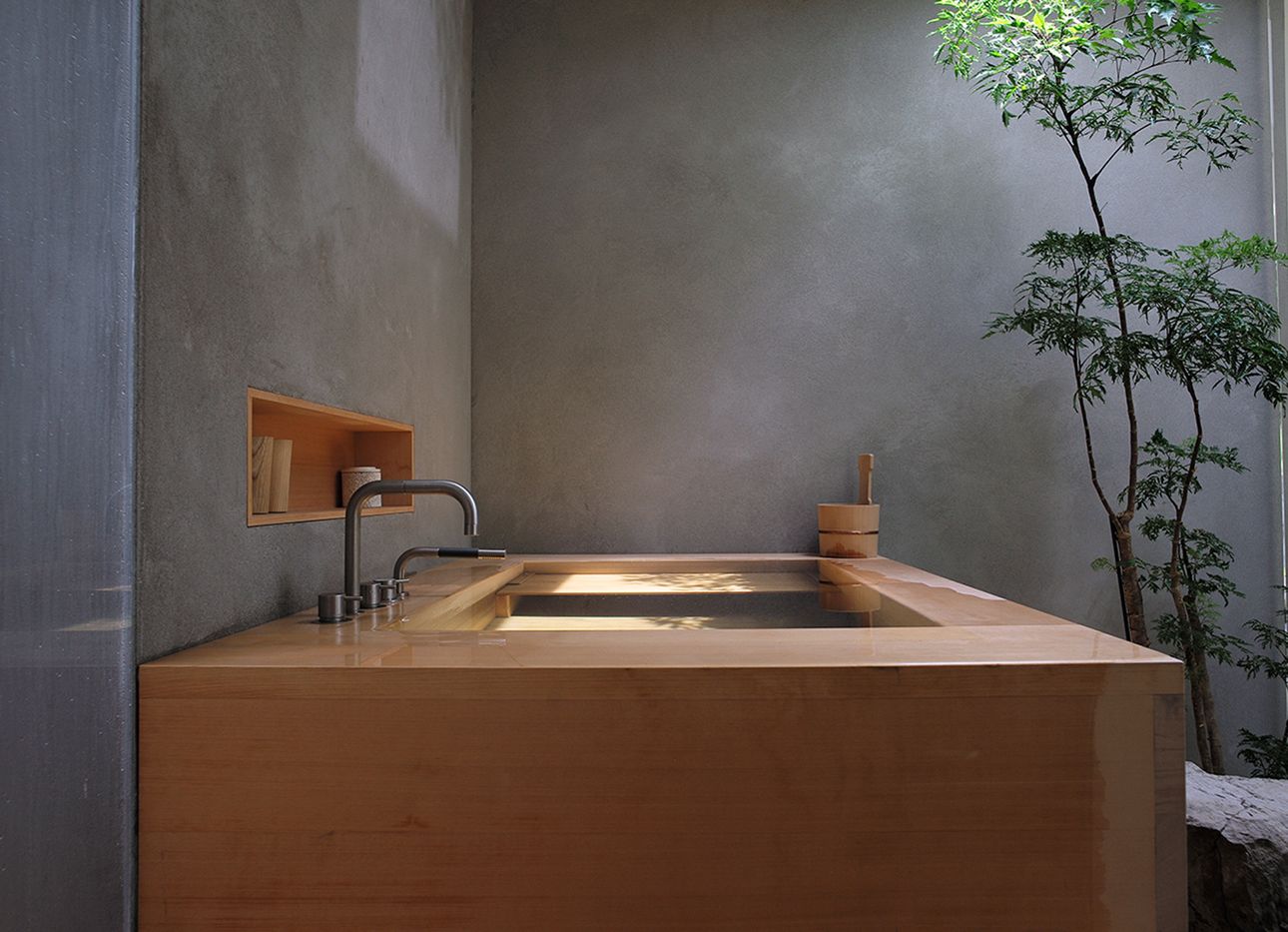
Hinoki Is the World’s Absolutely Best-Smelling Wood
A species of cypress native to central Japan, hinoki is prized for its deeply fragrant scent, and its soft-wood timber is used to build a range of buildings and interiors—from 800-year-old castles and shrines, to everyday sushi bars and hard-wood flooring in homes. “Hinoki is not only a material, it is a spiritual and aesthetic concept,” says Italian expat Iacopo Torrini of Kobe-based Bartok Design, a top exporter of the wood. “Hinoki grows straight. Its color is light and its fragrance is fresh but delicate.” Despite its ubiquity in modern times, he adds, “Hinoki symbolizes purity and sincerity, therefore it is the preferred choice for buildings dedicated to the gods, as in the shinto shrines.”
From a functional standpoint, hinoki is also a resilient, load-bearing wood that’s impervious to rot, owing to its slow growth in cold and rugged, mountainous regions. It’s what makes traditional bathtubs made from hinoki a fixture in Japanese culture—and a superior treat elsewhere in the world, imparting a gentle, sweet aroma when hot water and steam hits the raw, unfinished wood that’s machined to a soft surface. But not all hinoki is equal, says Torrini, who sources only the highest-quality hinoki from Kiso Valley in Nagano prefecture, northwest of Tokyo. Unlike wood sourced for buildings, hinoki used for tubs must withstand the trials of continual water pressure, wetness, and drying—a set of conditions that only old-growth trees, 250 to 300 years old or more, are equipped to endure without warping or cracking between uses. Like a fine wine, Torrini says, this age also lends hinoki tubs their distinct aromatherapeutic charm: “The aroma is a direct consequence: more complex and almost fruity, compared to younger hinoki that tend to have a stronger conifer smell.”